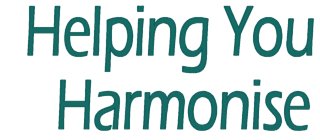Add a comment
Following Up with Surrey Harmony
‹-- PreviousNext --›Wednesday took me back to Coulsdon for another visit to Surrey Harmony. Two months on from my previous visit, they had had time to work with the ideas we explored in June, and we could see what was working, what needed further support, and what could usefully be added. And once again, we were working both to support the development of their director’s rehearsal and conducting skills and to build the skills of the singers.
Indeed, these two things often work hand in hand. Their MD Penny had a clear idea of the challenges she was facing: things that she knew she wanted to improve but was struggling to get the results she wanted. Hence, the coaching processes of diagnosis and intervention served both to help solve the problems and to model ways to go about solving them.
One of the general dilemmas about rehearsal process we addressed was the balance between working the detail and singing for more extended periods. Penny’s instinct is not to carry on when she hears a mistake, but to stop and deal with it immediately rather than allow it to become established. This is in many ways a great discipline, as the more times you repeat a mistake, the more firmly embedded it becomes.
On the other hand, there is also the need to experience longer spans of musical time. This is partly to provide musical satisfaction for participants, but also has rehearsal/educational value. It is how you build both cognitive and vocal stamina, and how you build up your internalised concept of broader musical structures.
One tactic we explored is to disaggregate periods of rehearsal focused on detail from purposefully longer spans of singing. The toggle principle is great for the latter, as a way to keep familiar repertoire alive in memory without falling into autopilot; singing in a song in ‘performance mode’ is also useful for this purpose. On Wednesday we toggled between singing in the characters of human/robot in one run-through and human/deity in another; I always enjoy these pairings for the way that different groups respond in distinctive ways to the contrasting characters. With Surrey Harmony, we found ourselves later being able to use ‘sing this in the style of a human being’ as a short-hand to evoke the communicative engagement they brought to that characterisation.
Another tactic to engage with longer spans of musical time was simply to resist the urge to stop the music on hearing the first mistake, particularly if it is one that has happened before. In this case, we’ve already missed the boat to prevent it becoming embedded, so there is value in making a mental note that it still needs sorting while letting the music continue to allow the singers to find their stride and do some self-correction within the flow of the music. Self-correction is the life-blood of learning, but by definition will entail making mistakes on the way through.
Interestingly, some of our work on conducting gesture was also in service of handing back responsibility for learning to the singers. One song in a fast 4/4 had been struggling with precision and tempo control, so Penny had been directing it in 4 to clarify the location of all four pulses in the bar. I asked her to try it instead in 2; she was initially reluctant, as she had previously been doing that but finding it gave more room for rhythmic inaccuracy. But the time spent practising it with a 4-pattern had done a lot to address this, and by letting go of every single beat, she was able to hand some control back to the singers, who then found a greater vocal flow and sense of teamwork within the phrase.
When I theorised the difference between musical and didactic gestures in my book on choral conducting, the examples of didactic gestures were typically those with the non-dominant hand, supplementary to metre, and placed separately from the gesture space that guides the general musical flow. But this example shows that subdividing pattern can also function as didactically, as a conscious reminder of technical detail. And, as with all didactic gestures, the goal needs to be to remove them once they have done their job, rather than building them permanently into the the concept of the piece.
Possibly the most significant moment during the evening was when we had been doing some detailed cognitive work, and then when we put it back into context, people were struggling to find their notes. It was clear that both singers and directors were getting anxious about this: all this work, and then suddenly we can’t do something we thought we knew.
But from a learning perspective, I always celebrate when we get to the point where everyone’s brains fall out. This is a sign that we are doing really deep work. It shows that we have successfully moved off the established neural pathways with the mistakes and approximations we’re trying to correct. You can’t build new pathways without abandoning the old.
Reframing this experience as something to welcome rather than fear makes life so much more enjoyable, and restores self-belief. The notes that have fallen out of everyone’s heads still need picking up and putting back in, but they are no longer something to worry about or a cause for frustration. If we can learn to embrace these moments as part of the process, we can get the benefit of the deep work without getting distracted by beating ourselves up about the elements of unlearning that are inherent in the development of greater skill.










.preview.jpg)

